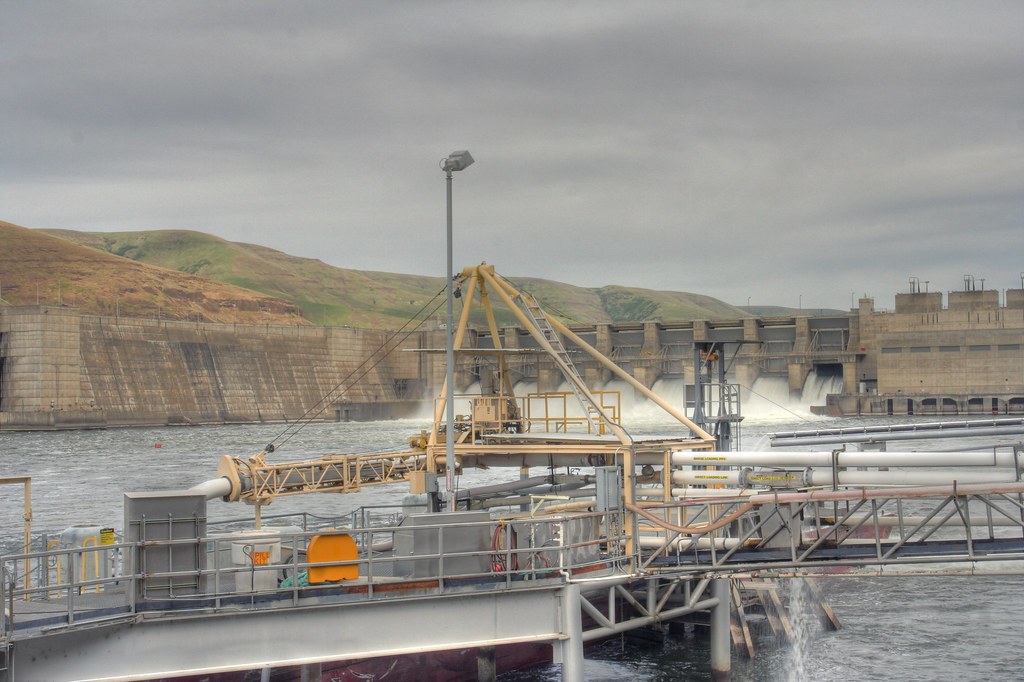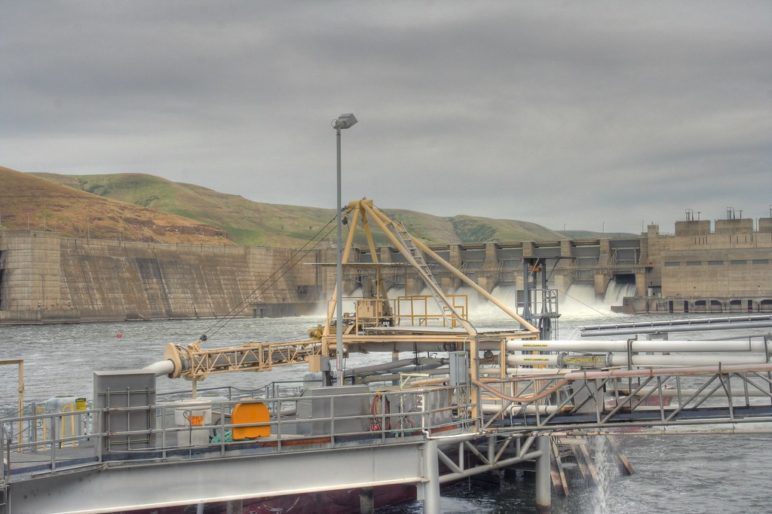Breaching the lower Snake River dams and restoring the river would not come cheap. The cost could exceed a billion dollars. (The value of wild salmon make that expense worthwhile, I argued in the first article of this series.) But making whole the irrigators and grain barging companies that are the principal beneficiaries of the dams would be surprisingly affordable. In some cases, paying them for their losses would cost less than continuing to operate the dams as at present.
In some cases, paying them for their losses would cost less than continuing to operate the dams as at present.

You would not guess it from the words of conservative political leaders along the Snake, though. When in late July, the consulting firm ECONorthwest (ECONW) released its study on the economic tradeoffs of removing the dams on the lower Snake River, US Reps. Cathy McMorris Rodgers and Dan Newhouse, both Republicans from Eastern Washington, immediately branded the report “a slap in the face of our state’s agricultural economy” adding that “billions of dollars in infrastructure improvements that would be needed for irrigation and transportation hardly come across as a ‘public benefit.’”
The ECONW study took a bean counter’s approach to weighing the pros and cons of dam removal. In the case of agriculture, it showed that the increased costs to irrigators and grain growers are surprisingly modest. Let’s take them in turn.
Irrigation after the Dams
Using water permit data from the Department of Ecology, ECONW identified 41 surface water diversions and 84 groundwater wells that could be affected by the drop in water levels if the dams were removed. In total, just 125 water sources out of 230,000 statewide permits managed by Ecology would be affected. Policymakers could choose to engineer water replacement solutions at no cost to the irrigators using those sources (rather than consider alternative water sources, compensate irrigators financially, invest in water conservation, or let irrigators suffer some from restoring the river—after all, water rights do not entitle anyone to massive federally subsidized dams).
But an irrigation specialist estimated that it would cost $148 million to plan, permit and replace the 41 diversions at the new water level after the dams were breached and $12 million extra to deepen or replace the 84 wells. These combined costs are about 12 percent of the estimated costs of removing the dams—not small numbers but certainly within the range of mitigation costs that have been part of other large public projects.
Read More:
Part I: An Overview of the Pros and Cons of Removing Snake River Dams
Part II: Dams’ Hydropower Is No Longer Particularly Cheap
Part IV: What Would Removing the Dams do to Jobs?
Grain hauling after the Dams
Downriver grain shipment makes up the majority of barge traffic on the lower Snake River. Grain growers have recently averaged annual shipments of about 2.2 million tons per year downriver. If the dams were breached, those grain shipments would either travel by truck to Pasco for barge loading or travel by train to Portland. The shift from barge to truck or train would increase costs for some grain growers. To estimate how much more they would pay, ECONW analyzed the average annual barge loadings at the ports along the Snake River and reallocated them to trucks or trains given the relative costs for each mode.
Using local data on the costs per ton-mile to move grain by barge, train, and truck, ECONW estimated that growers would pay an additional $6.2 million per year in shipping costs. Remarkably, the annual budget for operating the locks at the four dams is $21 million per year; the federal government spends one dollar operating the locks so grain shippers can save 30 cents on shipping. Better to pay the grain growers the 30 cents directly and let federal taxpayers keep the remainder.
If grain growers were forced to absorb higher shipping costs, the increase looks small in the context of the regional grain market. The average annual market value of Washington’s wheat and barley crops for the last ten years is $862 million. A $6.2 million increase in transportation for those who barge their grain represents an average cost increase that is less than one percent of the region’s grain revenues.
In the last 10 years, the revenue per acre of wheat has an average year to year variation of more than 20 percent as crop yields and prices swing in response to weather and market forces. Any cost increase matters to farmers and the increased shipping costs would fall more heavily on some than others, but policymakers should understand that shifts in transportation costs on the order of one percent are just one star in a broad constellation of forces that determine planting choices and profitability.
Given the alternatives for moving grain from the Palouse, wheat and barley would still find their way to market without barges on the lower Snake River. If the federal subsidy for barging shifts to trucks and trains, growers’ transportation costs need not increase at all.
All told, on the most generous assumptions, holding irrigators and grain haulers harmless and applying the savings from ending lock operations would cost roughly $80 million or about 7% of the cost of removing the dams. In spite of the howls of protest over the ECONW report, the face of agriculture in Eastern Washington would go unmarred if the dams came down.
Next time: Breaching the Snake River dams and restoring the river would add jobs, not subtract them.











Scott Levy
The ECONW study greatly exaggerated the cost of breaching the Lower Snake River (LSR) dams. Although they did consider the hydraulic breaching of DamSense, designed and modeled by John Twa (https://www.youtube.com/watch?v=kyGbgyPLDmc) this option was not selected, and for some unknown reason.
Instead, the ECONW study estimated a cost of breaching by considering a dam that needed the concrete structure removed. In the case of the LSR dams, the concrete structure remains in place. Removing the earthen embankment is far less expensive.
It may be just as simple as suggested by the highly-informed Federal Judge James Redden, “You just dig out the ditch”. (https://www.boisestatepublicradio.org/post/judge-redden-talks-salmon-case#stream/0)
I am hopeful that your future stories will consider this important discernment, and perhaps explain why ECONW rejected Twa’s modeling of earthen embankment removal.
Daniel Malarkey
ECONorthwest evaluated a broad range of costs for breaching the dams including costs that were one-third of those developed by the Corp of Engineers in 2002. These lower figures were used in the context of a Monte Carlo simulation which accounts for the fact that we don’t know for certain what the future costs of breaching will be. ECONorthwest used the Corps estimated costs as the midpoint of the range of future removal costs. Reasonable people may think those costs are too high but the track record of most projects close to $1 billion is that they go over budget rather than under. Even using costs of dam removal that some argue are too high, the case for dam removal remains strong.
Speed Williams
Is Cap & Trade 1530 taken into consideration?
I doubt it cause you whont have Trucks or Trains hailing these lost shipments duh.
Michael Walton
Electricity…
Charles
From the study: “The Lower Snake River Dams supply a small share of the energy needs for the Pacific Northwest region, and account for less power than BPA currently exports to other regions.”
That means that the loss of dams would require no additional power infrastructure. The study also says that some plans to add additional power could increase CO2 emmissions and raise utility bills by a dollar or two for consumers.
Jeffrey Sayre
Grossly inaccurate on costs for shipping. What about all the grain shipped from the Camas Prairie where the rail is gone? Sold to China. The current shipping system is faster and more environmentally friendly than adding thousands of semi-tractors to our roads. Rain is non-existent in the state its in now in the LC Valley. If barging were to go away as the most cost effective way to get grain to international shippers, rain becomes very expensive. I have seen costs of $300 to $3000 per rail car when other commodities are in demand like oil, coal or containers shipping via rail. Most trucks like to have a back haul to cover their costs. One truck company told me to haul 60,000 pounds of grain from Lewiston to Portland would cost between $900 to $1100 a load one way. The high end is with no back haul. That’s more than $.30 to $.35 cents. If wheat farmers in WA, Oregon and Idaho cant access international wheat export markets, where is the economic impact of that scenario? What is they are lost forever? The three states wheat farmers grow some of the, if not the best wheat’s in the world. If they can’t get their wheat to market……what do they grow instead? Incomplete economic studies are not worth the paper they are printed on just like the Vulcan study. Pie in the sky with lots of key slices missing.
Daniel Malarkey
The most likely scenario is that wheat that is currently trucked to Lewiston Idaho for barging would instead be trucked to Pasco and loaded on to barges there. That would certainly raise costs for wheat farmers but those increased costs are less than the costs of operating the locks at the four dams. In principle, the dam removal project could pay wheat farmers to compensate them for their increased transportation costs and still have money left over to help fund river restoration.
Jeffrey Sayre
Please exchange rail for rain in my posting. Rail is non-existent in the capacity to handle 40 million bushels a year there just from the LC Valley.
charlie
Its time to remove the dams benefits more life forms and bring balance back to the region. How about a healthy balance of wheat and salmon instead of just wheat. Diversified sustainable food sources are a must. Some of us want to have healthy salmon populations along with all the jobs, food sources and benefits more salmon and a healthier marine ecosystem brings. Too much wheat is as bad as not enough. Killing the river so someone can sell more wheat to china is ridiculous. The tax money we save removing the dams benefits everyone. Reducing the supply of wheat will increase wheat prices for the farmers anyway.
charlie
Its time to remove the dams, removal benefits more life forms and bring balance back to the region. How about a healthy balance of wheat and salmon instead of just wheat. Diversified sustainable food sources are a must. Some of us want to have healthy salmon populations along with all the jobs, food sources and benefits more salmon and a healthier marine ecosystem brings. Too much wheat is as bad as not enough. Killing the river so someone can sell more wheat to china is ridiculous. The tax money we save removing the dams benefits everyone. Reducing the supply of wheat will increase wheat prices for the farmers anyway.
Donald Trump Wins 2020
Some of us just want to live our lives without tree and salmon huggers intruding has on our god given freedom
Donald Trump wins 2020
I bet none of you actually know a thing about farming.